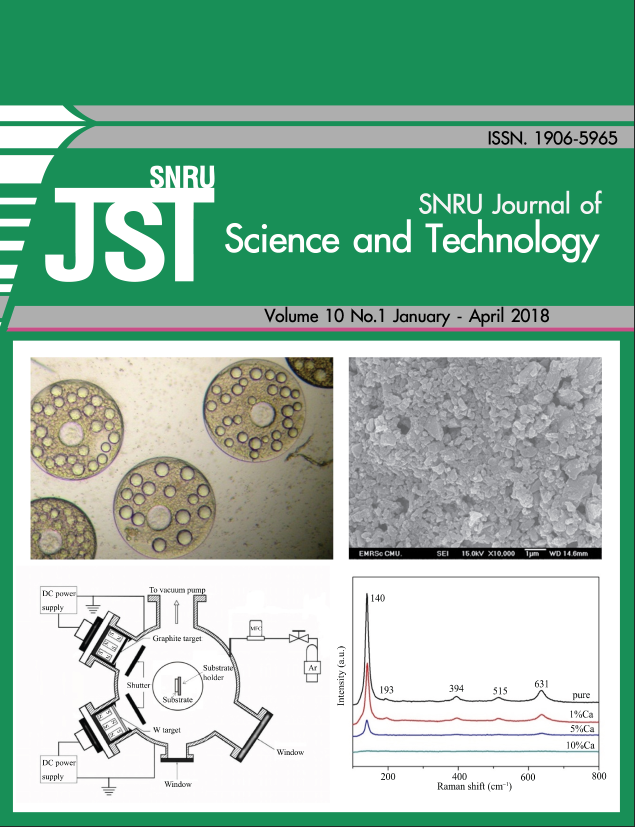Effect of crosslinking agent and starch contents on hydrogel from deproteinized natural rubber latex and starch
Keywords:
deproteinized natural rubber latex, hydrogel, wound dressingAbstract
Natural rubber latex from rubber tree (Hevea brasiliensis) is an important natural polymeric resource in Thailand. Natural rubber latex is widely used in several rubber product manufactures especially medical application. However, an allergy is often found when use rubber products. It may cause of an allergen in rubber latex. Then, the objective of this research was prepared hydrogel from deproteinized natural rubber latex (DNRL) with gelatinized starch. Method I, crosslinked deproteinized natural rubber latex (DNRL) was firstly prepared by using zinc mercaptobenzothiazole (ZMBT) as initiator and sulphur as crosslinking agent. Method II, using potassium persulfate as initiator and N,N’- methylenebisacrylamide (MBA) as crosslinking agent. Secondly, the crosslinked DNRL was mixed with gelatinized starch by mechanical stirrer. Finally, the mixture was casted on a glass mould to form thin film via crosslinked reaction at 60 oC in oven for 24 hr. Hydrophilicity properties of hydrogel were determined in term of % swelling and % water content. It was found that hydrogel from DNRL with gelatinized starch crosslinking with MBA provided statistically a greater level of % swelling and % water content. Furthermore, hydrogel from DNRL with gelatinized starch are able to developed for use as wound dressing in medical application.









